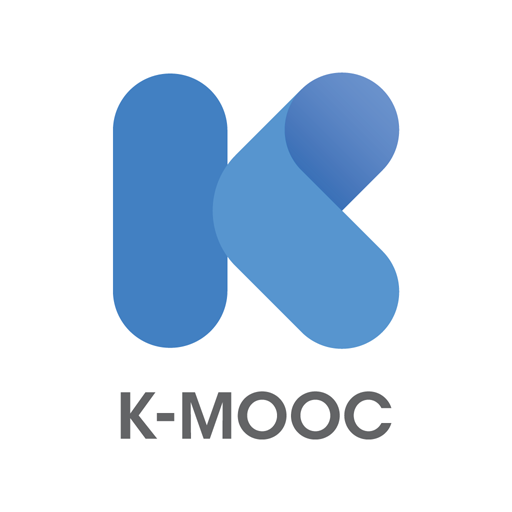About Korean Massive Open Online Courses

DUE TO COVID-19, schools are closed, and online education has become a must. Recently, online platforms with various class options have been receiving greater recognition. However, “online courses” is not a new concept; these options have been available for some time. Korean Massive Open Online Courses (K-MOOC) being one of them. Enrollments in K-MOOC have experienced a rapid increase over the past few months. Considering the benefits of K-MOOC, students will find many advantages in continuing to keep their eyes on this platform even after the pandemic finally comes to an end[1].
About K-MOOC
K-MOOC was launched by the Korean Ministry of Education in 2015 with the ambitious goal of providing all people with excellent higher education institutions’ courses for free and connecting willing educators and learners. This was a significant event, considering the fact that at the time MOOC had increasingly been attracting considerable attention around the world as a new form of the higher education system. Currently, the National Institute for Lifelong Education executes this program, with courses provided by 4-year program universities. Initially, K-MOOC only allowed people to audit courses, which was similar to the prior online platform, Korea Open Course Ware. However, K-MOOC differentiates itself from simple open course platforms by taking the extra step to increase student engagement through modification of its platform to emulate the “real” classroom environment. The platform allows students to participate in question-and-answer sessions with professors, take quizzes, and submit homework. It also regularly holds offline programs like forums, special lectures, and education exhibitions. Anyone, after creating an individual account, can take courses of their choice among 1,306 open courses provided by nearly 140 universities. When the student completes a course, a certificate of completion is given, and these certificates are acknowledged by universities through the Academic Credit Bank System[2]. Ultimately, through K-MOOC, the Ministry of Education aims to guarantee universal education welfare for everyone [3].
Future development of K-MOOC
By providing courses online, K-MOOC has allowed diverse educational forms, including blended learning and flipped learning in universities. While K-MOOC might have provided the chance for people to learn without financial considerations, there are still doubts casted about its future development. Although K-MOOC has reached its quantitative goals, there is, a lack of diversity in contents, and university students have claimed that the currently available content is not adequate for their needs[4]. 52% of the total courses are under the category of humanities and social sciences, and courses related to natural science, medicine, and entertainments are comparatively small in number. Moreover, there is also a shortage in customized courses that take into consideration the learner’s respective age group, learning ability, and interests. Correspondingly, less than a quarter of the total enrolled students actually complete the course. Thus, the future prospect of K-MOOC lies in whether it can efficiently cater to student’s learning needs.
Need for change
Upon analyzing other countries’ MOOCs that precede K-MOOC, there are several aspects which the domestic platform can benchmark to address its weaknesses. Compared to that of K-MOOC’s 63 courses, MOOC focuses on connecting its courses and university degree, and there are nearly 600 courses for MOOCs in the U.S. that allow the student to get credit. One solution applicable for the domestic platform is to utilize the Academic Credit Bank System to motivate students to complete the course. According to a survey replied by Wonkwang University students, the reason behind their dissatisfaction with their experience of K-MOOC was due to a low level of credit acknowledgment [5]. Heo-jun (Prof., Dept. of Civil & Environ. Engin.) added that connecting K-MOOC with university education by giving college credit for completing courses is crucial for its success [6].
Another problem of K-MOOC is the fact that only domestic universities with 4-year programs were able to join the platform initially. 2-year colleges, research institutions, and companies were allowed to join only recently. However, experts have noted that for K-MOOC to diversify its range of courses, it should cooperate with a wider variety of educational institutions. For instance, Coursera is well known for the courses provided, not just by academic institutions, but by companies like Google and International Business Machine. Coursera is also a great example of MOOC that accommodates students’ needs. It recommends courses for users by helping them find the right online degree depending on their circumstances. The site reaches an audience beyond just students. There is also a separate service that provides courses for teams and business companies. To be recognized institutionally, K-MOOC has to first deal with its obvious shortcomings by coming up with a long-term model of K-MOOC, and referring to other countries’ MOOC systems would be useful.
* * *
In the era of rapidly accelerating digitalization during the pandemic, K-MOOC doubled its size of operation and is planning to provide courses that enhance the learning performance of students. More efforts are put to develop K-MOOC as Korea’s representative open online platform by tackling some issues and through tackling current concerns regarding K-MOOC, it would guarantee people with life-long education.
[1] University News Network
[2] This is a system that recognizes one’s learning experience outside the school.
[3] Veritas
[4] University News Network
[5] Research Information Sharing Service
[6] Donga Science

